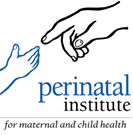| A1 What’s the use of customised growth charts? |
| Customised charts predict the growth potential of each baby and display the gestation related optimal weight (GROW) curves. This is done by adjusting for known constitutional / physiological variables (maternal height, weight, ethnic origin and parity), and excluding pathological factors such as smoking and diabetes. As a result, GROW charts are better at identifying pathological growth and confirming when growth is normal than any population based chart. For further information, please see www.gestation.net/literature.htm |
| A2 What do the lines on the chart signify? |
| The middle line (50th centile) is the optimal growth curve, which goes through the ‘Term Optimal Weight’ (TOW) point at 40 weeks. The upper and lower lines show the 90th and 10th centile limits, respectively, for fetal weight. The curves can also be used to plot the slope of fundal height measurements. With any assessment of growth, the slope of serial measurements is more important than individual points. |
| A3 Do previous birth weights affect the centile lines on the chart? |
| No, but it is important to input previous baby weights so that the software can display centiles for each baby, to assist risk assessment in the current pregnancy. |
| A4 Do I need to generate a GROW chart for a woman who books at 30 weeks gestation? |
| Yes, and the entry of her weight will be an approximation (unless her pre- or early pregnancy weight is known). In any case, late bookers should be considered for serial scans as the accuracy of the gestational age and EDD is likely to be poor. |
| A5 The electronic system in the GP surgery where I am based shows a population based fundal height chart. Many GPs do not have training in the use of customised charts they are falsely reassured by this information. Help! |
| It is vital that all clinicians providing antenatal care for women are trained and competent in the use of standardised fundal height measurement and plotting on the mother’s own customised growth chart. One size does not fit all – the chart needs to be adapted to the characteristics of the pregnancy. |
| A6 Can I use a customised growth chart for twins? |
Yes – optimal growth in twins is similar to singletons until 37 weeks, which represents the EDD for twins [1]. The chart should be used for serial EFWs only, as fundal height measurements are not reliable in twins. Both babies can be plotted on the same chart.
- Gardosi J, Kady S, Francis A. Intrauterine growth in twin pregnancies. 2005;27(5): 163-166. ISSN 1971-1433 Intrauterine growth in twin pregnancies
For Perinatal Institute response to the TAMBA twin growth charts, please see here |
| A7 Ethnicity is often associated with social deprivation. How do you know that it is valid to adjust for ethnic origin? |
The GROW method for calculating growth potential considers other factors, including index of multiple deprivation (IMD), and calculates the differences in growth and birth weight which still exist AFTER excluding pathological factors as well as social deprivation [1].
There is other evidence that standards should be adjusted for ethnic variation, from the UK [2], US [3] and Canada [4,5]:
- Gardosi J. Ethnic differences in fetal growth. Ultrasound Obstet Gynecol. 1995 Aug;6(2):73-4
- Seaton SE, Yadav KD, Field DJ, Khunti K, Manktelow BN. Birthweight centile charts for South Asian infants born in the UK. Neonatology. 2011;100(4):398-403. doi: 10.1159/000325916
- Alexander GR, Kogan MD, Himes JH, Mor JM, Goldenberg R. Racial differences in birthweight for gestational age and infant mortality in extremely low risk US populations. Paediatr Perinat Epidemiol 1999;13:205–17.
- Kierans W, Joseph K, Luo ZC, Platt R, Wilkins R, Kramer M. Does one size fit all? The case for ethnic-specific standards of fetal growth. BMC Pregnancy Childbirth 2008;8:1.
- Hanley GE, Janssen PA. Ethnicity-specific birthweight distributions improve identification of term newborns at risk for short-term morbidity. Am J Obstet Gynecol 013;209(5):428.e1– doi: 10.1016/j.ajog.2013.06.042
|
| A8 Can I reproduce a chart if it is lost or damaged during the antenatal period? |
| As no patient identifiers are retained/saved during chart production, it is not possible to recall or reproduce a chart, even if the chart ID number is known. If a chart is lost or damaged it must be reproduced. |
| A9 When calculating the previous baby centiles the GROW-App uses the mother’s weight for the current pregnancy; what should we do if there was a significant weight difference between pregnancies? |
| If you feel the mothers weight was substantially different – say more than 10 kg – then this will affect the accuracy of the birthweight centile of the babies on the GROW chart. In this case you can recalculate the previous centile entering the previous maternal weight, using our individual centile calculator which is available from grow@perinatal.org.uk |
| A10 How do we produce a customised chart for a surrogate mother, or when a donor egg is used? |
| In all circumstances it is the characteristics of the host mother that is used to produce the customised growth chart. |
| A11 |






